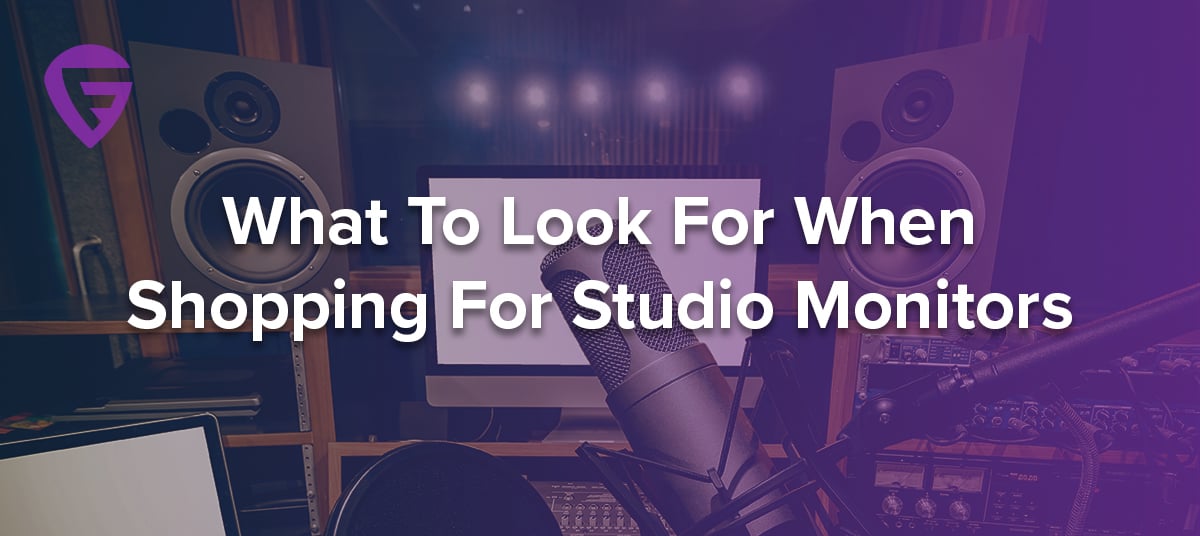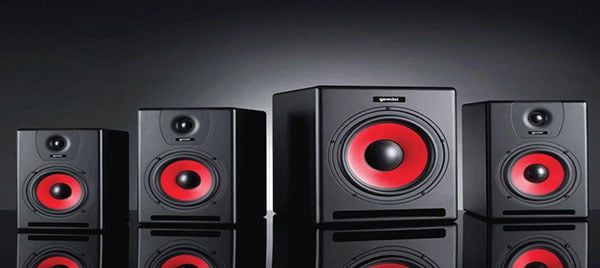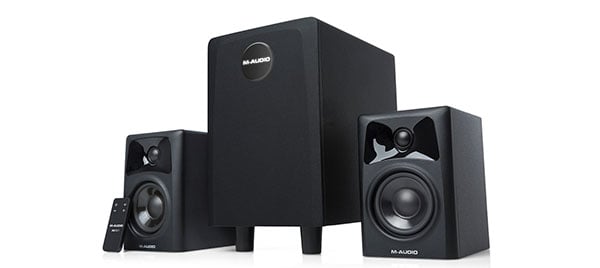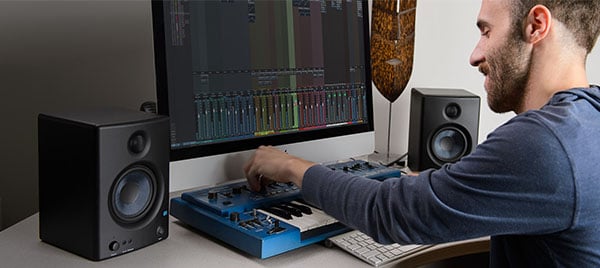- Home
- Instruments
- Gear
- Recording
- Lessons
- Reviews
- Blog

Finding the right set of studio monitors for your specific studio requires a bit of effort and research. There are always things you need to keep in mind, which have nothing to do with the quality of the speakers. Today we are going to talk about some of these things, and give you some general tips on how to get a set of monitors that will work great in your studio. If you are not sure which models are considered to be at the top of the game right now, check out our top picks for more info. With that said, let's get started.

One of the most common mistakes beginners make is thinking that bigger monitors are always better. It's hard to emphasize how far from the truth that is. The size of monitors you want to get will directly depend on the size of the room you are working with. Larger studios will tolerate larger monitors, but smaller studios will definitely not.
When we are discussing the size of monitor speakers, it's not that much about the size of the cabinet. Rather, it is the size of transducers that is the issue. Since tweeters are generally always around 1-2″ in size, they are something you don't have to worry about. Low-frequency drivers, on the other hand, require some consideration. If you are looking near field monitors, which is what most home producers use, you don't want to go over 8″ of LF cone diameter.

Most of the near field monitors on the market are active in nature. That means that amplification is built into the speaker. Passive monitors are great as well, however, they require a dedicated amplifier. On top of that, they are a bit more complex to use. That is why most home studios and a decent percentage of professionals like to use active monitor speakers.
Active monitors come with a few other benefits aside from obvious convenience. Most of them have built in room acoustic adjustments. These come in form of high frequency and low-frequency trims and other filters. While not essential, having these features can really help you fine tune the speakers so that they match your room better.

Once you start looking into more refined monitor designs, you will notice that a large number of them are bi-amplified. This means that tweeters and low-frequency drivers are powered by two separate amplifiers. On the other hand, budget oriented monitors will only feature a single amplifier tasked with taking care of all transducers.
Bi-amped systems are preferable because dedicated power management means better definition and better dynamic range. However, single amp designs can be good too depending on how they are dialed in. Choosing to go with one or the other comes down to your budget more than anything else as bi-amped models are more expensive.

Every studio monitor is going to have a number of inputs and outputs, usually on the back panel of the active unit. Most common input you will see is a pair of RCA ports. However, more competitive monitors will also feature a 1/4″ TRS as well as an XLR input. Whether or not it is worth investing a bit more to get these features is going to depend on your needs. Do you have other equipment that uses those jacks, which you would like to plug into your monitors? Better yet, do you plan on acquiring equipment of that kind in the future?
If you look closely, you will find that a large number of studio monitors feature a bass reflex port of some kind. With that said, some manufacturers choose to put these ports in the back, while some place them on the front of the speaker. This choice definitely makes a difference.
As you probably know, reflex ports are there to improve the bass response of the monitor. When they are located in the back, you will have to make sure that the speaker is not too close to the back wall. The reason for this is the way low frequencies bounce off the walls. You need to give the speaker some room. How much exactly, will depend on a number of factors. Front firing ports minimize the problem to a certain extent. However, since low frequencies aren't as directional as high frequencies, the direction of the port won't be able to eliminate this issue.

Power in the context of monitor speakers affects a lot more than just volume. With underpowered monitors, pushing them hard can lead to sound distortion. More power will give you more headroom to work with. In other words, you will be able to push the transducers as much as you need to without their performance being distorted. Near field monitors, in general, aren't used at high volume. As a matter of fact, more volume only leads to more problems with room acoustics.

Lastly, let's talk about the budget for a moment. Whatever your financial abilities are at the moment, chances are you will be able to find a decent monitor that will work. Choosing to mix on your desktop speakers is the worst thing you can do. Even the cheapest set of monitors is going to help you immensely. Don't worry too much if you can't afford a high end set of speakers. Start with what you can afford and work your way up from there.
From everything we have mentioned in this short guide, it should be apparent that choosing a set of studio monitors requires quite a bit of planning. As annoying as it might appear, doing the planning portion of the process correctly will pay off exponentially when you finish your first project. As you grow your skills, you will start to notice your studio's acoustic properties. When the time comes to get professional level gear, you will know exactly what you need.

Reader Interactions